Excerpt from the National Commission for Culture and the Arts - article by Prof. Felipe de Leon, Jr., Oct. 6, 2003:
"The answer to this is Pigafetta's account, at the time when the Magellan expedition sailed into Cebu harbor on April 7, 1521 when a large settlement of people hugging the shore greeted the Spanish. Sugbu was strung out four to five miles along the shore with a population estimated to number several thousands.
A narrow channel separated the settlement from the small flat island of Mactan, Cebu which was then ruled by a Rajah who was called Humabon--the title obviously appropriated from Malay. Pigafetta noted down the word Raja for King. He also mentioned two Siamese junks in Cebu with a cargo of gold and slaves.
Raja Humabon, Pigafetta further describes, "was seated on the ground on a mat of palms, with many people. He was quite naked, except for a cloth covering his private parts."
"Round his head was a very loose cloth, embroidered with silk. Round his neck was a very heavy rich chain, and in his ears were two gold rings hung with precious stones. He was a short man, and fat, and had his face painted with fire in diverse patterns. He ate on the ground from another palm mat, and then he was eating turtle eggs on two porcelain dishes, and he had four jars full of palm wine, which he drank with reed pipes."
It can also be mentioned that "barter rings" (large rings of pure gold) were used as currency--the size were as big as doughnuts, which traders carried and used in transacting business. Ancient Filipino gold, according to Ramon Villegas, was known as "Tumbaga" or red gold.
Jewelry making in Cebu, and other areas in the Philippines, could be one of the oldest in the world. The craftsmanship and artistry of early goldsmiths rival the finest that have come out of ancient jewelry centers like Bactria, India, and the Middle East, and Majapahit, Indonesia.
The unique characteristic of producing droplets of the granulated gold beads, each perfectly round, is a feat matching the early Etruscan's. Copper ring was found beside a copper tweezer-like object in Cebu similar to what was later found in Butuan, suggesting goldsmith or jewelry-making in Cebu. The copper tweezers were probably used to pick up minute gold granules or gold filigree.
In Naga, Cebu, 22 kilometers south, a burial site yielded an adze used for boat-making, native pottery shards, shell bracelets, beads and iron points.
From the artifacts unearthed in the three excavation sites in Cebu City, Dr. Rosa Tenazas and Carl Hutterer, a team of anthropologists from the University of San Carlos point to Cebu as a fishing village that evolved into a trading center, a manufacturing center that produced metal craft, jewelry, boats and cotton cloth.
It was also a trading center where nearby islanders could exchange forest products and food crops with finished goods or imported commodities. It was this concentration of technological skills and its strategic location that must have drawn people in ancient times to flock to old Sugbu..."
Gold found in Boljoon, Cebu, from SEAArch, April 2009:
" Gold jewelry was unearthed, again, at the archaeological dig located within the Patrocinio de Maria parish compound in Boljoon town, south of Cebu.
A 14 karat to 18 karat gold necklace measuring 1.1 meter long and weighing 34.1 grams was found in a burial ground along with the remains of a female.
They were unearthed by Capitol heritage consultant Jose Eleazar “Jobers” Bersales and a team from the University of San Carlos (USC) Department of Sociology and Anthropology.
The monetary value of the necklace, based on current exchange rate, is P22,650 but the historical significance and archaeological value, according to Bersales are “immeasurable.”"
Gold death masks - click here June 2009
The University of San Carlos, located in Cebu, is hosting an exhibit of rare finds, the Cebu Daily News reports.
Archaeologists from the institution's department of sociology and anthropology uncovered the pieces, which include a gold burial face mask.
It was found at Cebu's Plaza Independencia during a project that concluded last month, the news source noted.
Also on show is a gold necklace measuring over one metre in length and weighing more than 34 grams, which was uncovered at a burial site in Boljoon.
Monday, November 16, 2009
Gold and Ancient Cebu, Philippines
 Cecilia Manguerra Brainard's official website is ceciliabrainarddotcom. She is the award-winning author and editor of 22 books, including When the Rainbow Goddess Wept, The Newspaper Widow, Magdalena, Selected Stories, Vigan and Other Stories, and more. She edited Growing Up Filipino 1, 2, & 3, Fiction by Filipinos in America, Contemporary Fiction by Filipinos in America, and other books..
Her work has been translated into Finnish and Turkish; and many of her stories and articles have been widely anthologized.
Cecilia has received many awards, including a California Arts Council Fellowship in Fiction, a Brody Arts Fund Award, a Special Recognition Award for her work dealing with Asian American youths, as well as a Certificate of Recognition from the California State Senate, 21st District, and the Outstanding Individual Award from her birth city, Cebu, Philippines.
She has lectured and performed at UCLA, USC, University of Connecticut, University of the Philippines, PEN, Shakespeare & Company in Paris, and many others. She has served in the Board of literary arts groups such as PEN, PAWWA (Pacific Asian American Writers West), among others.
Cecilia Manguerra Brainard's official website is ceciliabrainarddotcom. She is the award-winning author and editor of 22 books, including When the Rainbow Goddess Wept, The Newspaper Widow, Magdalena, Selected Stories, Vigan and Other Stories, and more. She edited Growing Up Filipino 1, 2, & 3, Fiction by Filipinos in America, Contemporary Fiction by Filipinos in America, and other books..
Her work has been translated into Finnish and Turkish; and many of her stories and articles have been widely anthologized.
Cecilia has received many awards, including a California Arts Council Fellowship in Fiction, a Brody Arts Fund Award, a Special Recognition Award for her work dealing with Asian American youths, as well as a Certificate of Recognition from the California State Senate, 21st District, and the Outstanding Individual Award from her birth city, Cebu, Philippines.
She has lectured and performed at UCLA, USC, University of Connecticut, University of the Philippines, PEN, Shakespeare & Company in Paris, and many others. She has served in the Board of literary arts groups such as PEN, PAWWA (Pacific Asian American Writers West), among others.
Subscribe to:
Post Comments (Atom)


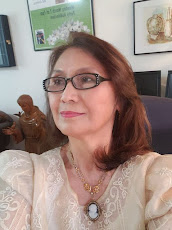

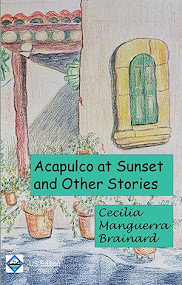



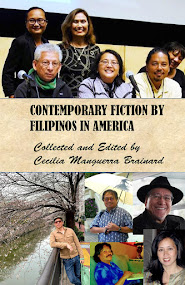
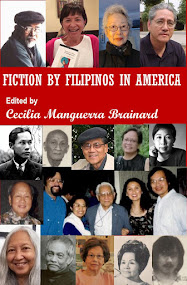



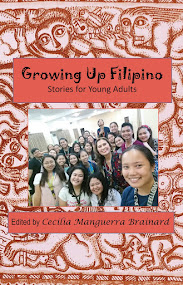
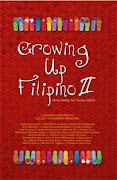


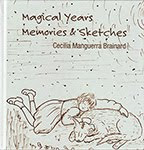


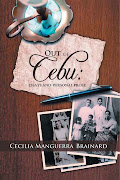

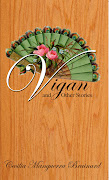

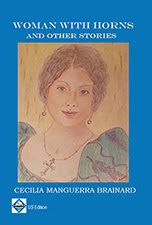

No comments:
Post a Comment